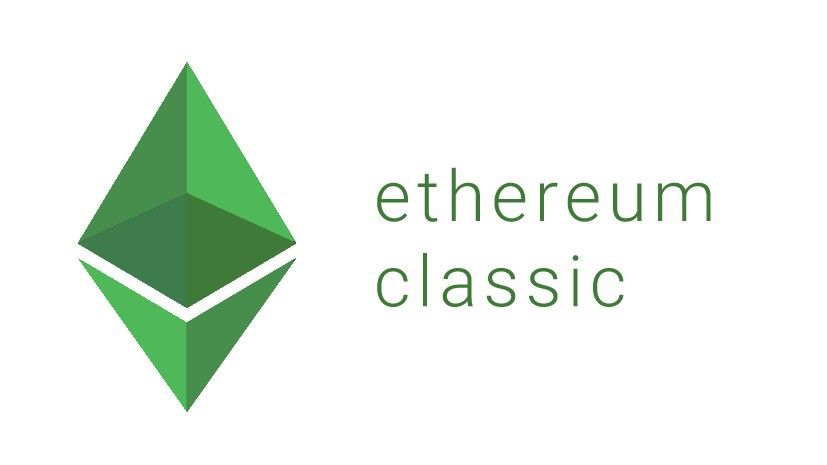Intriguing Ethereum Dream: Impact on Spot ETFs Due To SEC Security Classification In 2024
The wait for a spot Ethereum ETF (Exchange Traded Fund) in the United States has been an agonizing one for cryptocurrency enthusiasts. While Bitcoin ETFs finally received the green light in early 2024, Ethereum, the world’s second-largest cryptocurrency, remains stuck in regulatory limbo. A key fear gripping traders is the possibility of the US Securities and Exchange Commission (SEC) classifying Ethereum as a security, potentially derailing spot ETFs applications altogether.
The Specter of Regulation: The Howey Test and Ethereum
The SEC’s power to classify assets as securities stems from the Howey Test, a legal framework established by the Supreme Court in the 1940s. The test outlines four key criteria:
- Investment of Money: Investors must contribute capital.
- Common Enterprise: Investors pool their money in a common investment scheme.
- Expectation of Profits: Profits are derived from the efforts of others, not the investor’s individual efforts.
- Readily Saleable Security: Investors expect to be able to easily sell their investment.
Ethereum arguably meets some, but not all, of these criteria. Investors certainly contribute money and expect profits derived from the network’s overall success. However, the Ethereum network operates on a proof-of-stake consensus mechanism, where validators (akin to miners in Bitcoin) lock up their ETH to secure the network. This could be interpreted as investors exerting some effort, potentially muddying the waters on the third prong of the Howey Test.
Recent Events Fueling Anxieties Surrounding a Potential Security Classification of Ethereum
The classification of digital assets by regulators, particularly the US Securities and Exchange Commission (SEC), has been a major source of anxiety within the crypto industry. In the case of Ethereum, the world’s second-largest blockchain by market capitalization, several recent events have heightened these concerns:
1. Consensys Lawsuit Against the SEC (April 2024):
- Event: Consensys, a leading Ethereum software development company, filed a preemptive lawsuit against the SEC.
- Why it Raises Anxieties: This lawsuit can be interpreted as a proactive move by Consensys to counter a potential security classification of Ethereum by the SEC. Their reasoning is that such a classification would stifle innovation within the Ethereum ecosystem and negatively impact the US crypto industry.
- Underlying Anxiety: The lawsuit highlights the industry’s fear of a security classification, which could lead to stricter regulations, potentially stifling innovation and hindering the growth of the Ethereum ecosystem.
2. SEC Wells Notice to Uniswap (Late April 2024):
- Event: The SEC issued a Wells Notice to Uniswap, a decentralized exchange (DEX) built on the Ethereum blockchain. A Wells Notice informs a recipient that the SEC is considering enforcement action against them.
- Why it Raises Anxieties: While the specific details of the SEC’s concerns with Uniswap remain unclear, the issuance of a Wells Notice is seen as a sign of increased regulatory scrutiny towards DeFi (Decentralized Finance) protocols built on Ethereum.
- Underlying Anxiety: This event fuels anxieties that the SEC views DeFi activities on Ethereum as potentially violating securities laws, leading to a potential crackdown on these protocols and casting a shadow over the entire Ethereum ecosystem.
3. SEC Chair Gensler’s Silence on Ethereum Classification:
- Event: SEC Chair Gary Gensler has consistently avoided providing clear guidance on how Ethereum will be classified. This lack of clarity leaves the industry in a state of uncertainty.
- Why it Raises Anxieties: The SEC’s silence is seen by some as a deliberate tactic, keeping the industry on edge and potentially hindering progress on approving spot Bitcoin ETFs (Exchange Traded Funds). Investors hoping for a clear regulatory path for Ethereum and broader crypto adoption are left frustrated.
- Underlying Anxiety: The lack of clear communication from the SEC creates an environment of uncertainty, making it difficult for businesses to invest and innovate within the Ethereum space. Additionally, it hinders the approval of investment products like spot ETFs, which could bring more mainstream institutional investors into the crypto market.
These recent events highlight the ongoing tension between the crypto industry’s desire for innovation and the SEC’s mandate to protect investors. The classification of Ethereum as a security could have significant repercussions, impacting everything from how DeFi protocols operate to the availability of investment products. Until the SEC provides clearer guidance, anxieties surrounding Ethereum’s classification will likely persist.
Additional Considerations:
- The Howey Test: The SEC uses the Howey Test to determine whether an asset qualifies as a security. This test considers factors like investment of money, a common enterprise, expectation of profits, and the efforts of a promoter.
- The Ethereum Improvement Proposal (EIP) 1559: Implemented in August 2021, EIP-1559 introduced a burning mechanism for transaction fees on Ethereum, potentially making it less reliant on miners and potentially altering its classification under the Howey Test.
- The Global Regulatory Landscape: Regulatory approaches to crypto assets vary significantly across different countries. The lack of global harmonization adds to the uncertainty surrounding Ethereum’s classification.
The future of Ethereum’s classification remains uncertain. However, by understanding the recent events and the underlying anxieties, we can gain a deeper perspective on the ongoing debate between innovation and regulation in the crypto space.
Also, read – Spot vs. Futures ETFs: Top 10 Intriguing Diffrences And Similarities Between Them
The Impact of a Security Classification on Ethereum Spot ETF Applications
The potential classification of Ethereum as a security by the SEC would have significant ramifications for applications for spot Ethereum ETFs (Exchange Traded Funds). Here’s a breakdown of the likely consequences:
1. Increased Regulatory Scrutiny:
- A security classification would subject Ethereum and any investment products tied to it, like spot ETFs, to stricter regulations under the purview of the SEC.
- The SEC would have greater oversight over the issuance and trading of these ETFs, requiring compliance with a more complex regulatory framework. This would involve a more rigorous application process for spot Ethereum ETFs, potentially leading to delays and higher costs for issuers.
2. Potential Disqualification of Existing Applications:
- Existing applications for spot Ethereum ETFs might be disqualified if the SEC determines that Ethereum falls under their definition of a security.
- Issuers would likely need to revise their applications to comply with the new regulatory requirements, causing delays and potentially forcing them to resubmit their proposals.
3. Deterrence of Future Applications:
- The increased regulatory burden and potential for delays associated with a security classification could discourage future applications for spot Ethereum ETFs.
- Issuers might be hesitant to navigate the complex regulatory landscape, especially if the potential returns are not deemed high enough to justify the risks and costs involved.
4. Reduced Liquidity and Investor Interest:
- If spot Ethereum ETFs are hindered by stricter regulations, the overall liquidity of the Ethereum market could be negatively impacted.
- Investors seeking exposure to Ethereum might be deterred by the complexities and potential risks associated with a security-classified ETFs, leading to decreased demand for these products.
5. Potential for Innovation Stifling:
- A security classification could stifle innovation within the Ethereum ecosystem.
- Stricter regulations might limit the development of new DeFi (Decentralized Finance) applications and other innovative use cases built on the Ethereum blockchain.
However, it’s important to consider some potential counter-arguments:
-
Enhanced Investor Protection: Proponents of a security classification argue that it would provide greater investor protection by bringing Ethereum under the SEC’s regulatory umbrella.
-
Increased Legitimacy: A clear regulatory framework could legitimize Ethereum in the eyes of institutional investors, potentially attracting more mainstream investment.
-
Potential for Regulatory Clarity: A definitive classification, even as a security, could provide some degree of long-term regulatory clarity, which some view as preferable to the current state of uncertainty.
The ultimate impact of a security classification on spot Ethereum ETFs applications remains to be seen. However, the potential consequences are significant and could have a ripple effect on the entire Ethereum ecosystem.
Looking Ahead:
The regulatory landscape surrounding crypto assets is constantly evolving. It’s crucial for both regulators and the crypto industry to work collaboratively towards establishing clear and effective regulations that foster innovation while protecting investors.
A Glimmer of Hope: The Proof-of-Stake Argument Against Security Classification
While anxieties surrounding a potential security classification of Ethereum are high, there are arguments suggesting it might not be inevitable. One key argument hinges on Ethereum’s recent transition from a Proof-of-Work (PoW) to a Proof-of-Stake (PoS) consensus mechanism, known as “The Merge.” Here’s how PoS could influence the classification debate:
The Howey Test and Investment Contracts:
-
The SEC uses the Howey Test to determine if an asset qualifies as a security. One key factor is whether the asset represents an “investment contract,” meaning an investment of money in a common enterprise with the expectation of profits from the efforts of others.
-
Under PoW, Ethereum miners could be seen as contributing “efforts” to the network’s security through their computational power. This potentially strengthens the argument for Ethereum being an investment contract under the Howey Test.
Proof-of-Stake and Reduced Reliance on Third Parties:
-
With PoS, validators lock up their own Ethereum (ETH) tokens to secure the network. Profits come from block rewards and transaction fees, not necessarily from the efforts of a central promoter.
-
This shift weakens the argument for Ethereum being an investment contract under the Howey Test. Validators are essentially securing the network with their own assets, potentially distancing themselves from the role of passive investors relying solely on the efforts of others.
The SEC’s Focus on Function Over Form:
-
The SEC has indicated a focus on the function of an asset over its form when making classification decisions.
-
Proponents of Ethereum argue that its primary function is to facilitate decentralized applications (dApps) and smart contracts, not to generate profits for investors. This functional argument could further weaken the case for Ethereum being a security.
Regulatory Precedents and Ongoing Developments:
-
The SEC has yet to definitively classify any Proof-of-Stake blockchain as a security. This lack of precedent offers some hope for Ethereum.
-
The ongoing development of Ethereum and its potential evolution into a more decentralized and utility-driven platform could further strengthen the argument against a security classification.
It’s important to note that the legal arguments surrounding Ethereum’s classification are complex and there is no guarantee that PoS will definitively prevent a security classification. However, it provides a compelling argument that could be used to counter the anxieties currently gripping the crypto industry.
The Road Ahead: Collaboration and Clear Communication
The future of Ethereum’s classification hinges on ongoing dialogue between the SEC, the crypto industry, and legal experts. Clear and consistent communication from regulators is crucial for fostering innovation and providing a stable environment for the crypto space to flourish.
The Road Ahead: Regulatory Clarity and Innovation:
The coming months will be a defining period for both Ethereum and the prospects of spot Ethereum ETFs. The lingering question of Ethereum’s classification by the SEC casts a long shadow, impacting innovation and investment opportunities within the Ethereum ecosystem. Here’s a breakdown of the key factors to consider:
1. The SEC’s Decision on Ethereum’s Classification:
-
The SEC’s stance on Ethereum’s classification will be the most critical factor shaping the landscape. A security classification would trigger a series of consequences, as outlined previously.
-
Conversely, a clear classification as a non-security would provide much-needed regulatory clarity, fostering innovation and potentially paving the way for spot ETFs approvals.
2. Potential Regulatory Developments:
-
The SEC might release additional guidance or clarifications on how they view digital assets like Ethereum. This could provide some direction for the industry, even if a definitive classification isn’t immediately forthcoming.
-
Additionally, legislative efforts at the federal level could influence the regulatory framework surrounding crypto assets. Any new legislation could impact Ethereum’s classification and the prospects for spot ETFs.
3. The Continued Evolution of Ethereum:
-
The Ethereum development team is constantly working on improvements, including scaling solutions and protocol upgrades. These advancements could further strengthen the argument for Ethereum being a functional utility platform, potentially bolstering its case against a security classification.
-
The growth and diversification of the Ethereum ecosystem, with a wider range of decentralized applications (dApps) and use cases, could also support the argument for Ethereum’s non-security status.
4. Collaboration Between Industry and Regulators:
-
Open communication and collaboration between the crypto industry and regulatory bodies like the SEC will be crucial in navigating this complex landscape.
-
By working together, the industry can address regulatory concerns and regulators can gain a deeper understanding of the technology and its potential benefits.
5. The Impact on Spot ETFs Applications:
-
The SEC’s decision on Ethereum’s classification will directly impact the fate of pending spot ETFs applications. A security classification would likely lead to delays, rejections, or stricter regulatory requirements for these applications.
-
Conversely, a clear path for Ethereum as a non-security could open the door for spot ETFs approvals, potentially attracting new investors and legitimizing Ethereum as an investable asset class.
Looking Ahead: A Balancing Act
The road ahead for Ethereum and spot ETFs requires a delicate balancing act. Regulators need to find a way to protect investors while fostering innovation within the crypto space. The crypto industry, in turn, needs to demonstrate its commitment to responsible growth and user protection. Only through collaboration and clear communication can we unlock the full potential of Ethereum and pave the way for a future where spot ETFs provide a secure and regulated way for investors to participate in this evolving asset class.
Conclusion: A Balancing Act
The SEC faces a delicate balancing act – fostering innovation while protecting investors. A clear and well-defined regulatory framework for cryptocurrencies is essential for long-term market stability and institutional adoption. Whether the SEC can achieve this balance and pave the way for a US spot Ethereum ETFs without stifling innovation remains an open question. The answer will have a significant impact on the future of Ethereum and the broader cryptocurrency landscape.
Stay informed with daily updates from Blockchain Magazine on Google News. Click here to follow us and mark as favorite: [Blockchain Magazine on Google News].
Get Blockchain Insights In Inbox
Stay ahead of the curve with expert analysis and market updates.
latest from tech
Disclaimer: Any post shared by a third-party agency are sponsored and Blockchain Magazine has no views on any such posts. The views and opinions expressed in this post are those of the clients and do not necessarily reflect the official policy or position of Blockchain Magazine. The information provided in this post is for informational purposes only and should not be considered as financial, investment, or professional advice. Blockchain Magazine does not endorse or promote any specific products, services, or companies mentioned in this posts. Readers are encouraged to conduct their own research and consult with a qualified professional before making any financial decisions. The featured image used is just a creative depiction of the title and it does not intend to hurt sentiments of any person or institution. If it hurts anyone sentiments, please do not hesitate to reach out to Blockchain Magazine.

 Bitcoin
Bitcoin  Ethereum
Ethereum  XRP
XRP  Tether
Tether  Solana
Solana  Dogecoin
Dogecoin  USDC
USDC  Cardano
Cardano  Lido Staked Ether
Lido Staked Ether  TRON
TRON  Chainlink
Chainlink  Avalanche
Avalanche  Wrapped stETH
Wrapped stETH  Sui
Sui  Wrapped Bitcoin
Wrapped Bitcoin  Toncoin
Toncoin  Stellar
Stellar  Hedera
Hedera  Shiba Inu
Shiba Inu  WETH
WETH  Polkadot
Polkadot  LEO Token
LEO Token  Litecoin
Litecoin  Bitcoin Cash
Bitcoin Cash  Bitget Token
Bitget Token  Hyperliquid
Hyperliquid  Uniswap
Uniswap  Official Trump
Official Trump  USDS
USDS  Wrapped eETH
Wrapped eETH  Pepe
Pepe  NEAR Protocol
NEAR Protocol  Ethena USDe
Ethena USDe  Aave
Aave  Aptos
Aptos  Internet Computer
Internet Computer  Monero
Monero  WhiteBIT Coin
WhiteBIT Coin  Ethereum Classic
Ethereum Classic  Ondo
Ondo  Cronos
Cronos  POL (ex-MATIC)
POL (ex-MATIC)  Mantle
Mantle  Render
Render  Dai
Dai  MANTRA
MANTRA  Algorand
Algorand  Artificial Superintelligence Alliance
Artificial Superintelligence Alliance 




